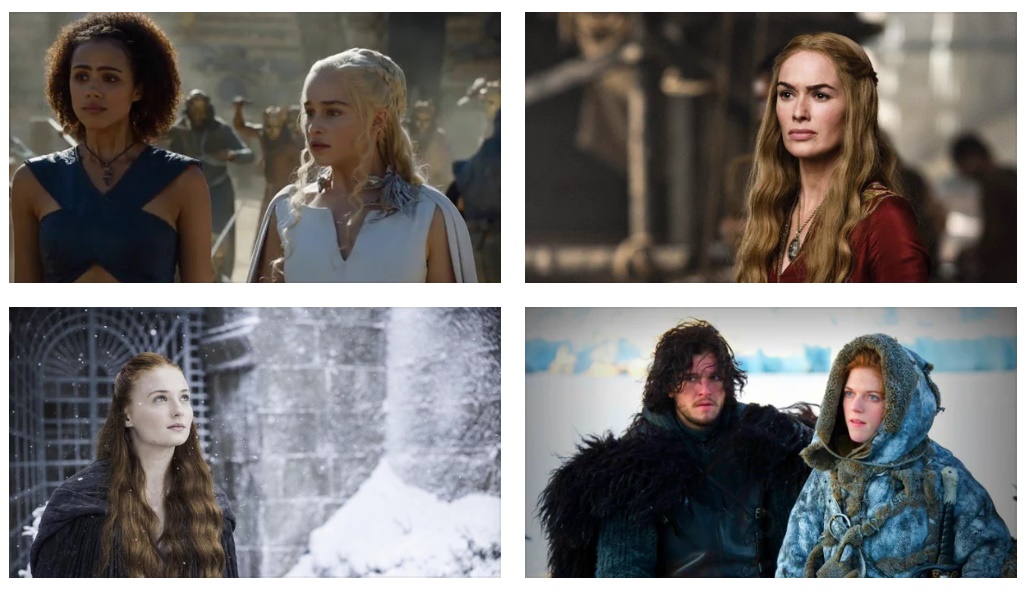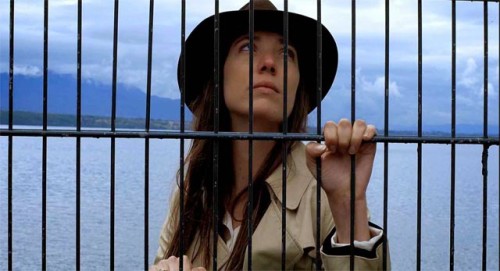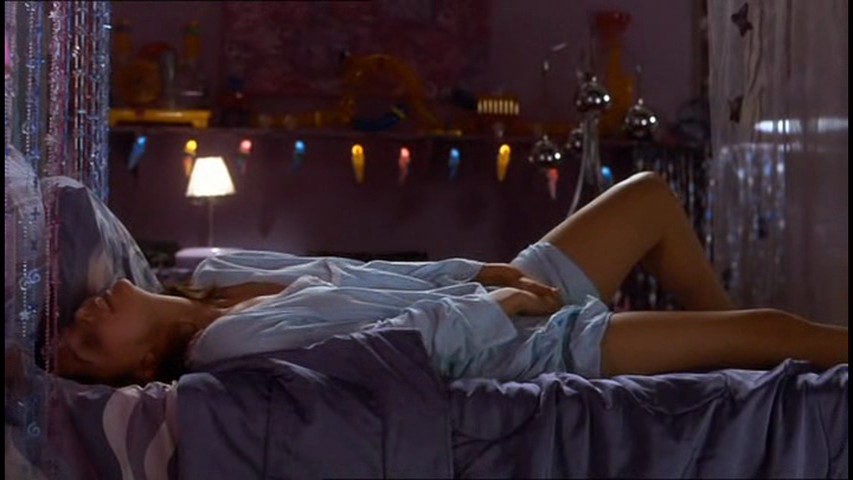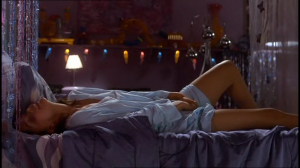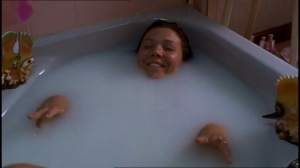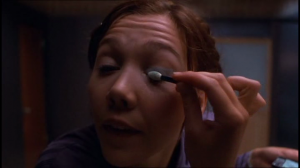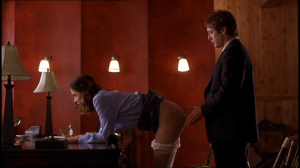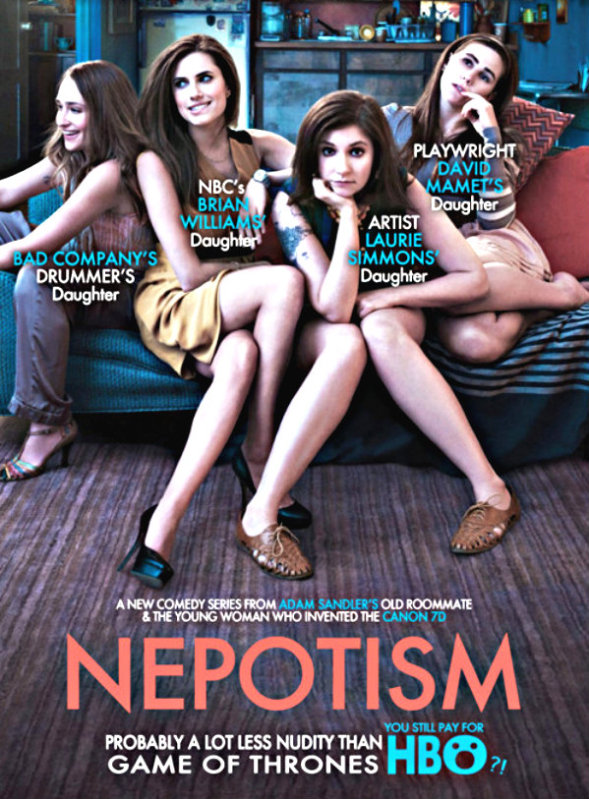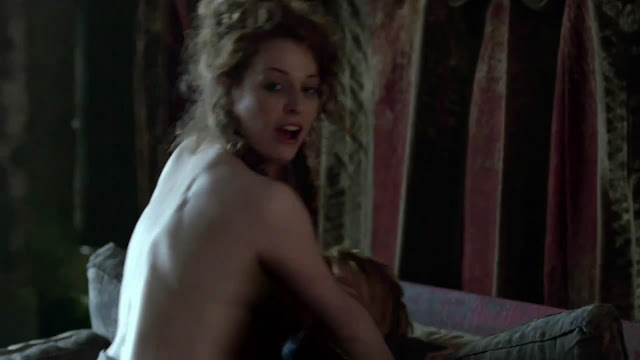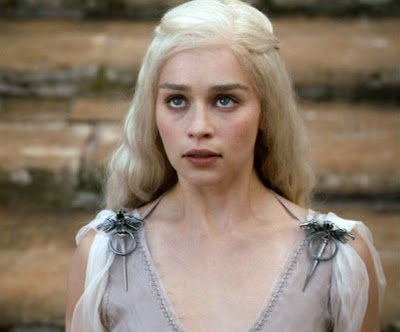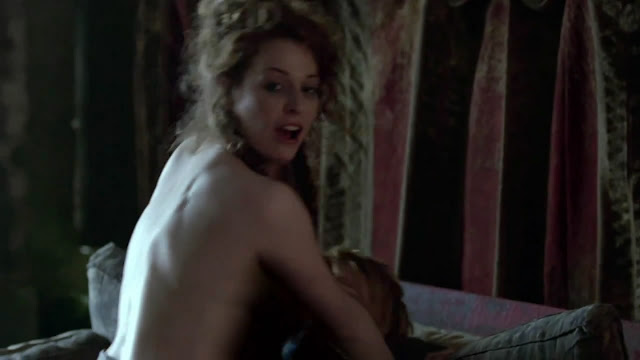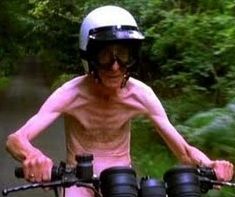Bowed, Bent, and Broken: Examining the Women of Color on Game of Thrones by Clara Mae
With the women of color being so scarce in the show, it’s just as important to look at the quality of these portrayals. While Game of Thrones does give us some strong women of color, many of them are portrayed problematically in their own ways: either put into subservient roles, exoticized, demonized, or otherwise discarded by the narrative in ways that the white characters aren’t.
Let’s Talk About the Children: War and the Loss of Innocence on Game of Thrones by Amy Woolsey
Children have always figured prominently in Game of Thrones, but their presence seems especially meaningful this [fourth] season, as we get a clearer glimpse of the war’s effect on bystanders, people not entrenched in political intrigue and behind-the-scenes strategizing.
Game of Thrones: Does It Feel Worse to Cheer For or Against Daenerys? by Katherine Murray
It’s hard to ignore that this is a white woman from a foreign nation who feels it’s her birthright to teach a bunch of brown people how they should behave. … On the flip side, watching a woman lose power on Game of Thrones always seems to involve watching her be sexually victimized somehow, which I can’t really get on board with, no matter how awful she is.
Why I Will Miss Ygritte’s Fierce Feminism on Game of Thrones by Jackie Johnson
Ygritte was fierce, she was vibrant, and she didn’t take any shit. Ygritte’s feminism was multi-dimensional, and for me she will always be missed.
When Brienne Met Jaime: The Rom-Com Hiding in Game of Thrones by Victoria Edel
But in that web of gloom, there’s this beautiful shining light: Brienne and Jaime. And while rom-coms are not often praised for their realism, to me, this couple is the most grounded, sensible thing about the show.
Game of Thrones: Catelyn Stark and Motherhood Tropes by Sophie Hall
Catelyn Stark’s main function in the show is to be a mother to Robb Stark, a prominent male character, whereas in the book series, A Song of Ice and Fire, she is so much more than that. … The show creators are here relying on mother tropes in order to set up the characters; Catelyn is now the nag who only cares about her family and nothing else, whereas Ned is now the valiant hero who wants to seek justice.
Game of Thrones: Is Jon Snow Too Feminine for the Masculine World? by Siobhan Denton
Whilst ostensibly male in terms of gender, Jon Snow’s character is arguably definably feminine through his actions, motivations and interactions with both female and male characters. … This is not to suggest that Jon’s character is not masculine; certainly his actions in battle signal him to be a hero in the archetypical sense, but I am suggesting that Jon Snow’s masculinity coexists with a feminine expression…
In Game of Thrones the Mother of Dragons Is Taking Down the Patriarchy by Megan Kearns
While many women orchestrate machinations behind the scenes, no woman is openly a leader, boldly challenging patriarchy to rule. Except for one. Daenerys Stormborn of House Targaryen.
Another Dead Sex Worker on Game of Thrones by Amanda Rodriguez
Even after the finale of its fourth season, the HBO series Game of Thrones continues its reputation for unpredictability and for subverting our genre expectations. However, a glaring pattern of predictability is emerging: all sex workers with significant roles will die horribly. Think about it.
“Love No One But Your Children”: Cersei Lannister and Motherhood on Game of Thrones by Sophie Hall
Cersei Lannister is cunning, deceitful, jealous and entirely about self-preservation. Yet, her show self seems to tie these exclusively with her relationship with her children… Why is motherhood the go-to in order to flesh out her character? Why can’t she be separate from her children, the same way the father of them, Jaime Lannister, is?
The Occasional Purposeful Nudity on Game of Thrones by Lady T
In fact, the difference between gratuitous nudity and artistic nudity is not that difficult to discern. Even Game of Thrones, the show that puts the word “tit” in “titillation,” occasionally uses nudity in a way that isn’t exploitative and adds to a scene rather than detracting from it.
Controversy is Coming for Game of Thrones by Rachel Redfern
Here’s the thing–for all of its controversy (which isn’t hurting the show’s viewership, I’m sure), people are still connecting to this show and are connecting to the terrible, senseless, often difficult situations that they have to struggle through. Game of Thrones offers us, and its characters, no clear way out of mess, no neatly tied up episode endings, hell, even the most devoted fans can only speculate on the series’ ending. This show hosts both the unknown future and the sadly familiar past of familial dysfunction and bad romantic choices.
Sex Workers Are Disposable on Game of Thrones by Gaayathri Nair
When we are introduced to Ros, she is working in Winterfell but as war approaches she decides to try her luck in King’s Landing expressing the view that if all the men leave for war there is not going to be much for her in Winterfell. Once there she goes from being “just a sex worker” to getting involved in the politics of the realm by becoming the right hand woman of Little Finger and subsequently double crossing him by becoming an agent for Varys. However despite her many interesting qualities and potential for interesting storylines, Ros basically exists for one reason to provide exposition regarding male characters on the show while naked. She is sexposition personified.
Masculinity in Game of Thrones: More Than Fairytale Tropes by Jess Sanders
Boys are judged on their ability to swing a sword or work a trade, criticised for showing weakness, and taught to grow up hard and cold. Doesn’t sound unfamiliar, does it? Masculinity is praised in Westerosi society, as it is in our own.
Game of Thrones: The Meta-Feminist Arc of Daenerys Targaryen by Amanda Rodriguez
The journey of Daenerys Targaryen is a prototype for female liberation, one that charts women’s emancipation over the centuries and encourages us to push harder and dream bigger for even more freedom now.
Here There Be Sexism?: Game of Thrones and Gender by Megan Kearns
I recognize that there’s a difference between displaying sexism because it’s the time period and condoning said sexism. But this IS a fantasy, not history, meaning the writers can imagine any world they wish to create. So why imagine a misogynistic one?
Motherhood in Film & Television: Spawning the World: Motherhood in Game of Thrones by Rachel Redfern
Gratuitous Female Nudity and Complex Female Characters in Game of Thrones by Lady T
Game of Thrones Season 2 Trailer: Will Women Fare Better This Season? by Megan Kearns
Luckily, Season 2 will see an influx of new characters, including lots of female roles. Huzzah! The “Red Priestess” Melisandre of Asshai (Carice van Houten), female warrior (!!!!) Brienne of Tarth (Gwendoline Christie), noblewoman Lady Margaery Tyrell (Natalie Dormer), Ygritte (Rose Leslie), the Ironborn captain (double !!!!) Yara Greyjoy (Gemma Whelan) named “Asha” in the novels. Wait, a sorceress, warrior and ship captain?? More women in leadership roles?? Sounds promising!
